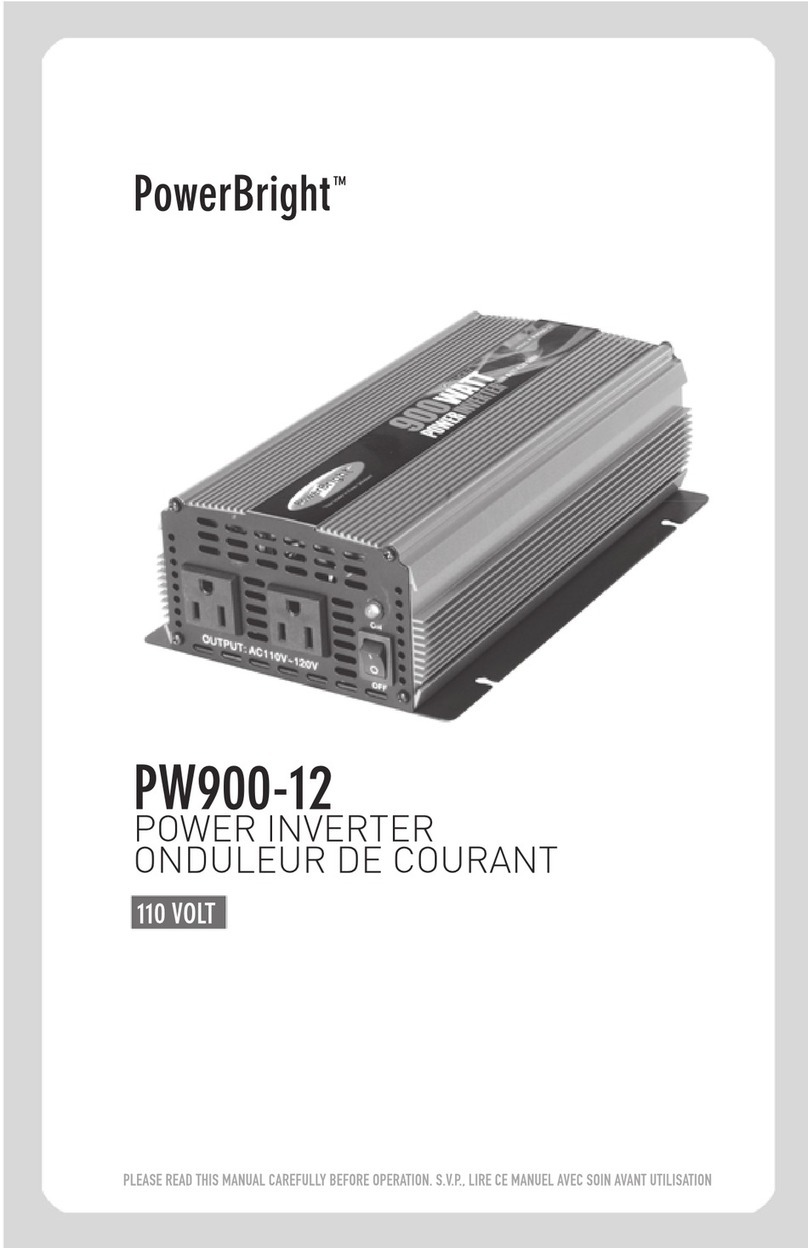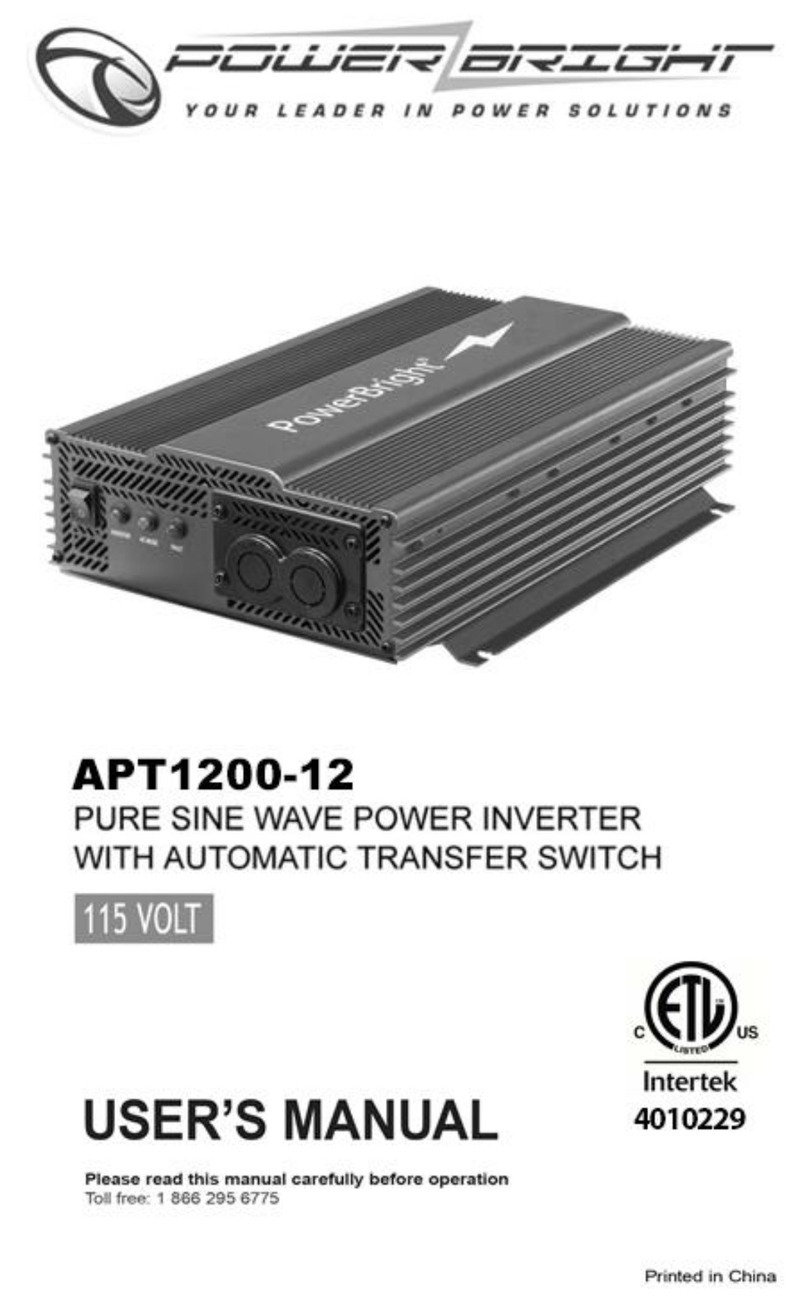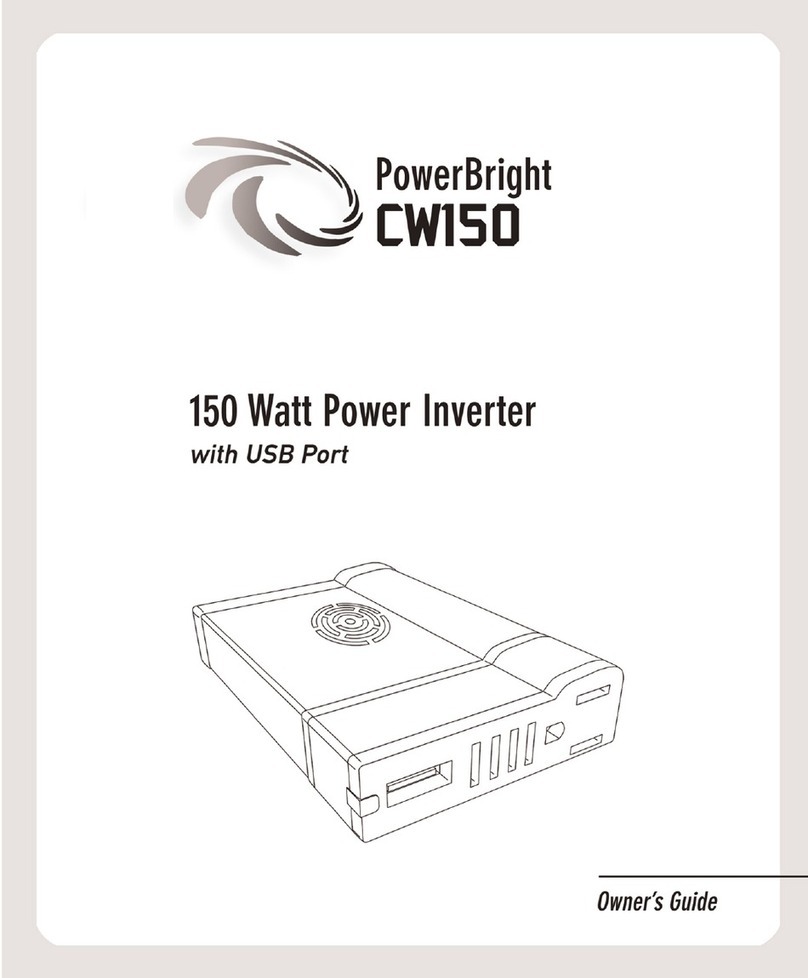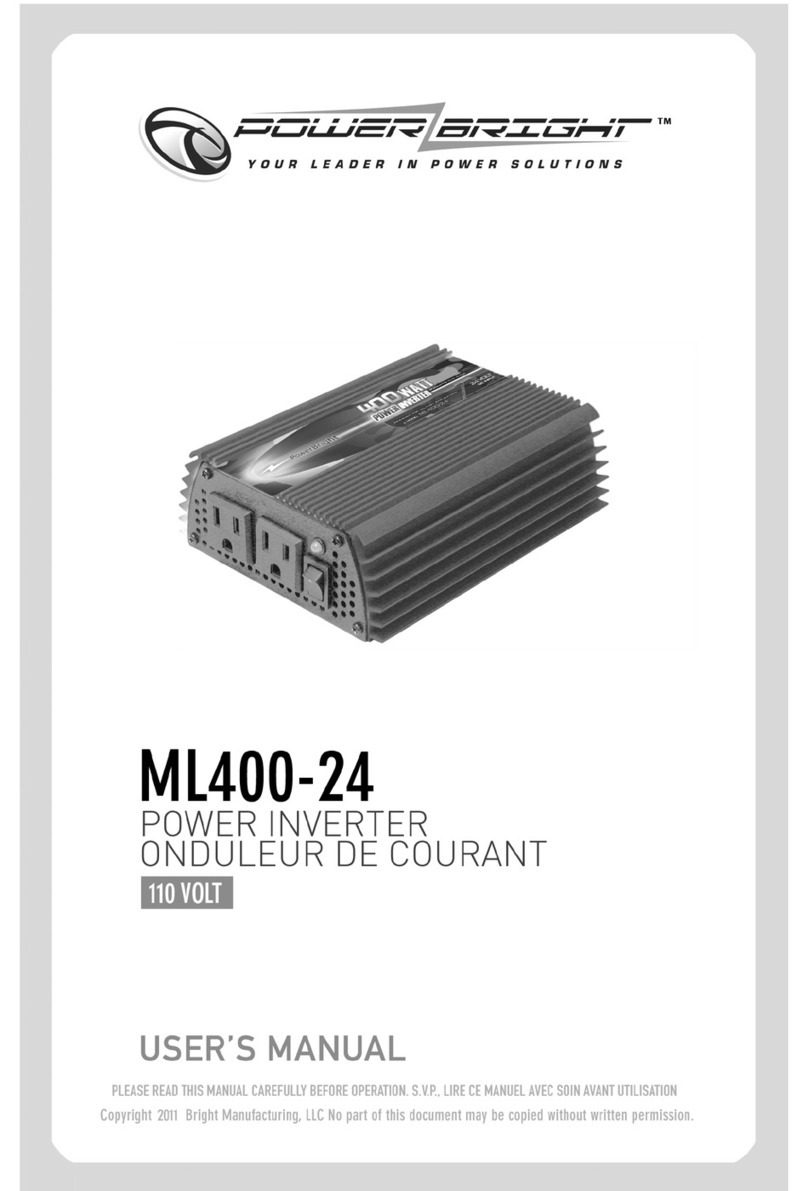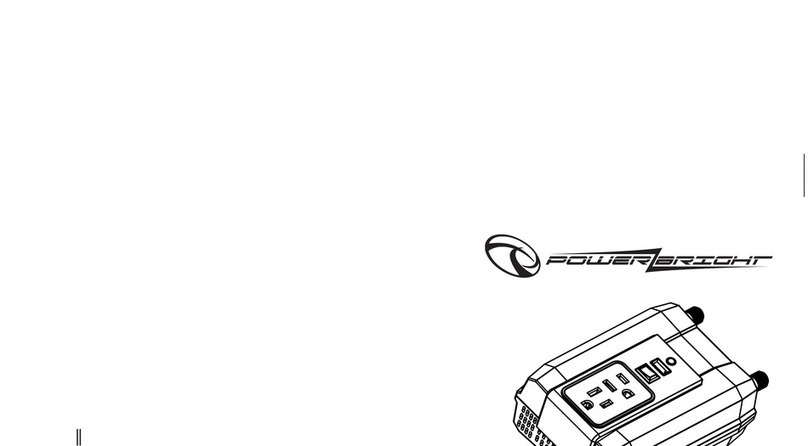PAGE 7
Selecting A Power Supply
When you operate the ERP2300-12 inverter for long periods of time combined with a
high continuous load demand, the result will be a large power drain from the battery.
With this in mind, check the reserve capacity of the battery you plan to use to power
your inverter. To calculate the approximate power drain on your battery you will want
to estimate the reserve power ("amp/hour") of the battery and the amps the inverter
will require, to meet the continuous load demand of the appliance.
1. When calculating the amp/hour of the battery, find its reserve minutes rating.
This is typically is marked on the battery label along with the "Cold Cranking
Amps" (CCA) rating. If you multiply the reserve minutes rating of the battery
by 0.3 it will tell you the battery amp/hour.
2. To estimate the maximum battery power the inverter will require to run a
piece of equipment or appliance, divide its continuous load wattage
equipment by 10.
3. Conclusion: The reserve power of a battery with a 150 reserve minutes
rating is sufficient to satisfy the continuous load demand placed on the
inverter for a maximum of about one hour. (45 amps/hour-amp draw = 1
hour).
Note:
The type of battery you use to power your inverter is important. Batteries designed to
start engines have multiple layers of very thin plates. These provide extensive
surface area that will produce a powerful short burst of electrical power required to
start combustion engines. Using an inverter will cause a battery to discharge and
recharge often. We recommend that you use a different type of battery that is
designed specifically for this type of load requirement. Deep cycle (marine) batteries
generally have the highest reserve ratings. They are designed with thicker plates
making them capable of withstanding repeated complete drains of power and
recharging. If you do not have a deep cycle battery we recommend that you run the
engine of your vehicle when operating the inverter.






